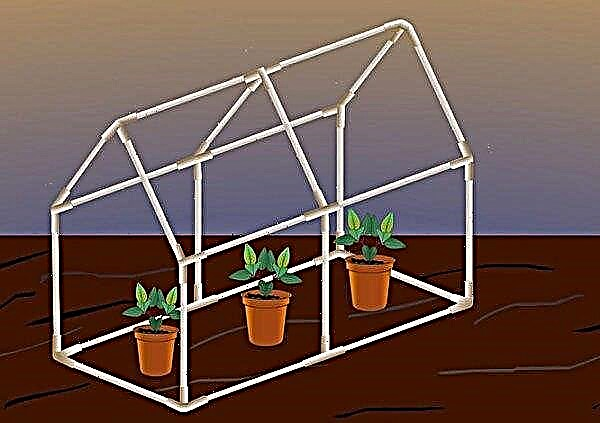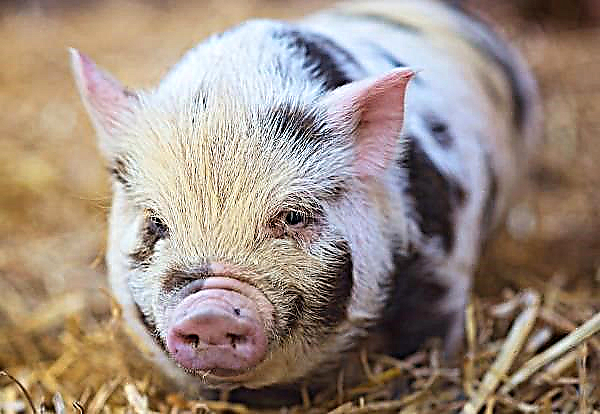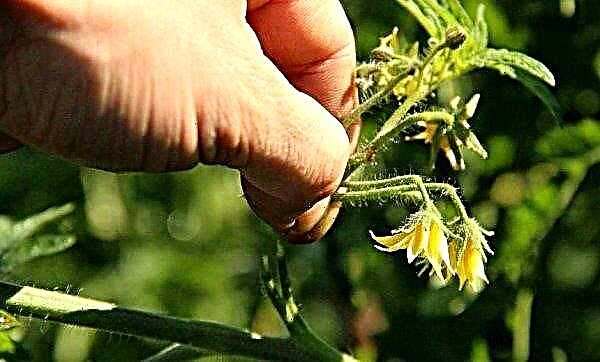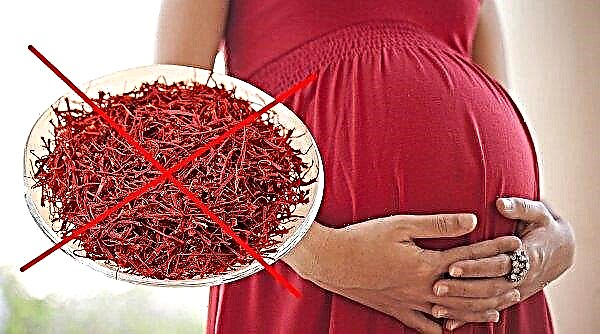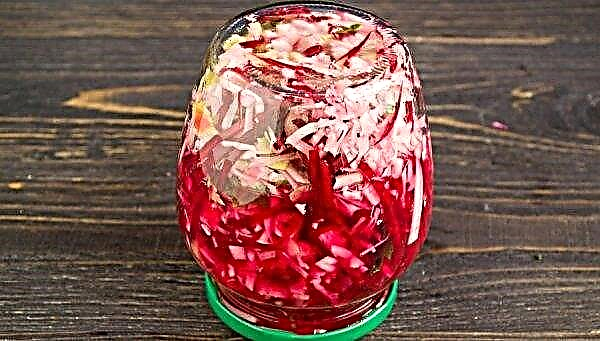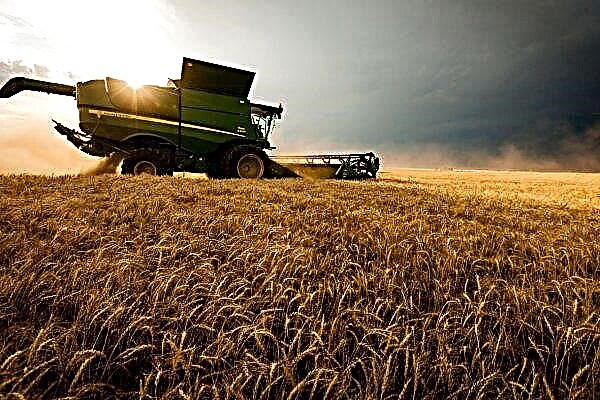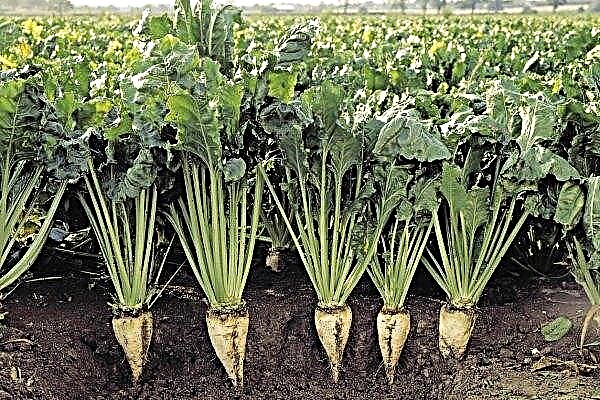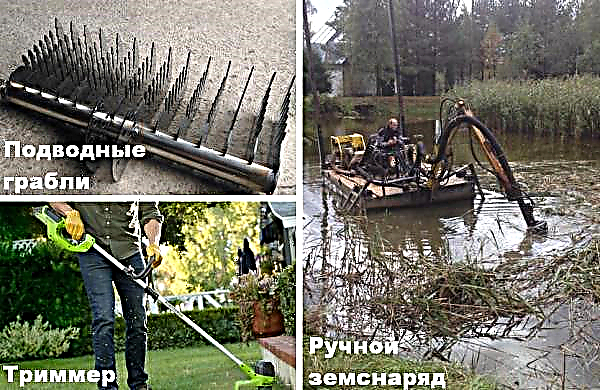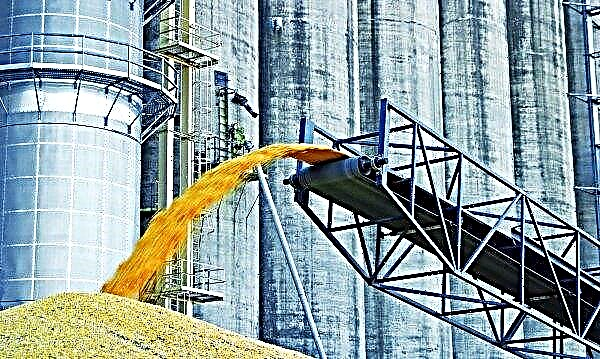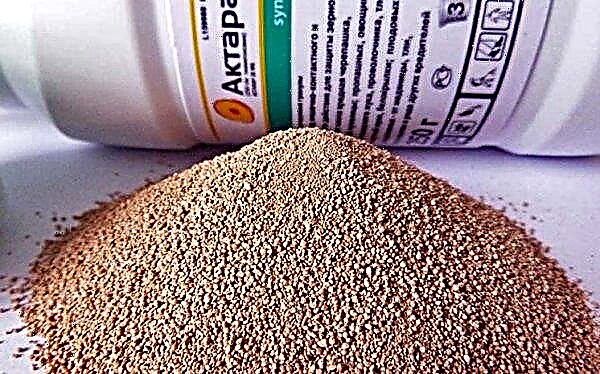It is unlikely that there will be an agrarian who will not be upset when he sees a large number of cracked potato tubers on the plot. Most often they are suitable for consumption, but they should not be used as seed. In order to avoid such situations, it is necessary to know the main causes of cracking on potatoes.
Possible causes of cracking potatoes in the ground
It should be remembered that cracks are not necessarily infectious diseases of potatoes, they can also be the result of improper cultivation. Its quality is influenced by weather conditions, diseases and pests. So, if during the second vegetation a sharp moistening of the soil is carried out after a prolonged drought, then cracks will appear on the potato.
Provocative factors and methods for their elimination
The crop is adversely affected by diseases and pests, clay soil, the use of low-quality planting material and other factors. Since tubers with cracks are hardly suitable for use, you need to know about the possible dangers and be able to protect plants from them.
Important! Contaminated potatoes should not be stored. In order to avoid further infection of root crops, tops and tubers affected bushes must be burned.
Disease
Non-parasitic diseases are caused by exposure to unfavorable physico-chemical factors:
- the influence of temperature;
- excess or lack of micronutrients;
- mechanical damage.

They are:
- viral - wrinkled mosaic, twisting, mottling;
- fungal - late blight, common scab;
- bacterial - “black leg”, ring rot.
Late blight. The causative agent is the fungal organism Phytophthora infestans D. B. When abundantly watered, its spores, penetrating the ground, infect tubers. Often, infection occurs when the potatoes come in contact with the topsoil during harvesting. Infection can persist in tubers and enter the soil with seed potatoes. Under favorable climatic conditions, the disease progresses and is able to fill all the landings within a few days.
The fungus quickly adapts to new conditions and the genetically determined resistance of the potato loses its ability to withstand it. A fertilizer based on copper and boron, which is desirable to be applied together with mineral fertilizers (70 and 30 g per 1 acre), increases the plant's immunity. Just two treatments of the plant during the growing season are enough. The application of organic fertilizers is a good method for improving clay soil. To do this, add the manure of farm animals or different types of compost or peat.
Methods of combating late blight:
- Use only healthy seed tubers.
- For planting, it is necessary to choose light soils using potassium-based recharge.
- Infected tubers and tops must be burnt or buried in a prepared hole pre-treated with milk of lime (mix 1 kg of lime with 10 l of water).
- Varieties with different resistance to the disease should not be planted nearby.
- To increase the stability of the potato, it is necessary to spray it with a solution based on 2 g of copper sulfate and 10 g of potassium permanganate per 10 l of water with a flow rate of 2 l per 100 kg of potato.
Common scab. This fungal disease is ubiquitous. Brown tuberous spots appear on young tubers, on the site of which characteristic ulcers of irregular round shape form over time. Thin-skinned tubers are less resistant to disease. Contaminated soil is the main source of this disease. The development of the causative agent of scab in the ground is facilitated by fresh pus of animals and unrefined plant remains, and a sufficient amount of humus inhibits its development.
Did you know? In the capital of Belarus there is a museum and a monument dedicated to potatoes. According to statistics, one resident of this country eats 183 kg of this vegetable per year, while one resident of Germany consumes 168 kg annually, Belgium - 132 kg, Russia - 90 kg.
Protective measures:
- Soil treatment with ammonium sulfate at the rate of 1-2 kg per 100 m² and superphosphate - 3-4 kg per 100 m².
- Etching of planting tubers (recommended to be treated according to the instructions with Fito Plus).
- After harvesting the potatoes, it is necessary to sow the soil with green manure (white mustard, bitter and fodder lupine, rye).
- The use of varieties resistant to this disease (Temp, Spark and others).
- Mandatory crop rotation.

"Blackleg". The disease is common in all regions of potato growing. The causative agent is a bacterium of the Erwinia carotovora species, which can destroy up to 50% of the obtained crop. It has three varieties: one of them reproduces well in cool weather, the second tolerates summer heat and cool well, and the third prefers warm weather. Bacteria cause decay of the lower part of the stem of a young plant. If the disease began when the tubers had time to set, they become covered with cracks and also rot.
Did you know? The first vegetable grown in space is potatoes. The experiment was conducted in 1995. aboard the shuttle Columbia.
It is necessary to adhere to the available methods of preventing the disease:
- Well-dried potatoes must be put into storage in a disinfected cellar.
- Surface treatment of potatoes is recommended before planting in the soil with the biological preparation Fitosporin-M or a solution of microelements: add 10 g of copper sulfate, potassium permanganate, boric acid and zinc sulfate to 10 liters of water.
- It is necessary to carry out the germination of potatoes in a bright room, where it grows in 15 days.
- It is not recommended to use mechanically damaged tubers as seed potatoes.
- Tubers are preferably planted in soil with low acidity, for this you can treat it with dolomite flour or ammonium sulfate.

Clay soil
Clay soil is found in most household plots. Due to the structure and structure, it is very difficult to process. In dry weather, such soil is covered with bark, and in rainy weather it accumulates moisture, without letting it pass into the soil. Potato roots in such soil are rotten. In addition, clay does not allow air to pass through, which is necessary for root breathing. Because of this, the development of tubers occurs unevenly, which leads to cracking.
Important! Lack of moisture leaves plants begin to fade and look lifeless, buds dry up, growth lag occurs. From an excess of moisture in the lower part of the stem spots appear with a coating, while the tubers begin to rot.
Irrigation
Irrigation regime has a very big impact on the quality of tubers - improper irrigation of the soil leads to the formation of cracks. It is recommended to water the potatoes twice a season: the first irrigation is preferably carried out after emergence, and the second after the formation of young root crops. Both watering should be plentiful. Before watering, weeds must be weeded, and after 2 days - to hush the bushes.
Professional farmers recommend watering potatoes in the hot summer twice a week. It is not recommended to irrigate tubers until the first shoots appear, since the root system is not developed and can rot in moist soil. As potatoes gain green mass, the need for fluid increases. Irrigation intensity must be reduced during the formation of tubers. Not all varieties of potatoes respond equally to changes in soil moisture. It is known that the variety of early ripening more often bursts than mid-early or medium. So, the Svitanok Kievsky variety is more prone to cracks than the Dutch varieties such as Kondar and Ostara.
Not all varieties of potatoes respond equally to changes in soil moisture. It is known that the variety of early ripening more often bursts than mid-early or medium. So, the Svitanok Kievsky variety is more prone to cracks than the Dutch varieties such as Kondar and Ostara.
A sharp change in temperature
You can get an excellent potato crop without irrigation, only in rainy and cool summers. In a hot, dry summer without irrigation, the young sprouts will simply dry out. From the difference in weather conditions, when drought begins after heavy rains or watering, the tuber bursts. However, if it is not susceptible to disease, it is considered suitable for storage. The only inconvenience is its cleaning.
Important! Unsuitable neighbors for potatoes are solanaceous crops. It is better to plant useful green manure near it to cleanse the soil and carry out continuous loosening of the soil.
Using poor-quality planting material
Poor planting material can also lead to cracking in potatoes. Potatoes can degenerate, which leads to a deterioration in presentation and a decrease in yield. Virus infections and climatic conditions lead to the degeneration of tubers. Such potatoes do not respond well to fertilizers, and also become ugly and unsuitable for reproduction. Viruses are transmitted to next generations of potatoes through poor-quality planting material. When there are no external signs of the disease, the yield decreases slightly.
Violation of agricultural technology
Without observing the requirements of the potato for the light regime, type of soil, irrigation regime, you can remain completely without a crop. It must be remembered that potato tubers begin to germinate when the soil at a depth of their occurrence is warmed up to + 8 ° C, and the green mass of the plant begins to develop in the same period.
Pests
The quality and quantity of the crop depends on the right measures to control insect pests. Together with chemical and biological methods, it is customary to use a set of technological and agrotechnical measures.
The most dangerous pests are:
- Colorado beetle.
- Wireworm (Doryanka) and a bear (Kapustyanka).
- The larvae of the Khrushchev or Maybug.
- Potato Moth.
- Potato nematode.
The most common potato pest is Colorado beetle. For a young plant, beetle larvae are more dangerous than adult individuals, since they devour the green mass of the plant with greater speed. Compliance with crop rotation prevents the appearance of beetles. You should not plant tubers several years in a row in the same place. The main method of dealing with wireworms - weeding weeds. Living in the ground up to 4 years, these parasites spoil the root tubers. The pest will not reach the mother tuber if it is thoroughly wiped with ash before entering the hole. In addition, calcareous soils have a negative effect on it, so do not forget to put lime or eggshells in the holes. If worms are found, they must be collected manually.
The main method of dealing with wireworms - weeding weeds. Living in the ground up to 4 years, these parasites spoil the root tubers. The pest will not reach the mother tuber if it is thoroughly wiped with ash before entering the hole. In addition, calcareous soils have a negative effect on it, so do not forget to put lime or eggshells in the holes. If worms are found, they must be collected manually. Medvedka It is a dangerous pest, because it eats tubers and the root system as a whole. A favorable factor for its reproduction is moist soil. As a prophylaxis, plants with a pungent odor, such as calendula and white mustard, should be planted next to potatoes. Biopreparations such as Actofit and Entotsid will help from wireworms and bears.
Medvedka It is a dangerous pest, because it eats tubers and the root system as a whole. A favorable factor for its reproduction is moist soil. As a prophylaxis, plants with a pungent odor, such as calendula and white mustard, should be planted next to potatoes. Biopreparations such as Actofit and Entotsid will help from wireworms and bears. From potato moththat infects tubers and leaves with their larvae, Bitoxibacillin and Dendrobacillin help. It is also necessary to ensure that the tubers remain at a depth of at least 14 cm, where the pest does not penetrate.
From potato moththat infects tubers and leaves with their larvae, Bitoxibacillin and Dendrobacillin help. It is also necessary to ensure that the tubers remain at a depth of at least 14 cm, where the pest does not penetrate. The main way to deal with nematode - prevention. You need to carefully weed the weeds and cover the ground with mulch. In the infected area, it is necessary to sow siderats for several years, best of all - rye or corn. Well help "Bazudin" and "Nemabakt" together with soil "Protection".
The main way to deal with nematode - prevention. You need to carefully weed the weeds and cover the ground with mulch. In the infected area, it is necessary to sow siderats for several years, best of all - rye or corn. Well help "Bazudin" and "Nemabakt" together with soil "Protection".
How to prevent potato cracks
General rule: in order to avoid cracks, it is necessary to follow the growing technology and use varieties resistant to cracking. It is also necessary to abandon the use of fresh manure and control the soil moisture, to combat pests that infect tubers.
After harvesting tubers, siderates should be planted in autumn to improve the chemical composition of the soil. White mustard, rye and phacelia have a good disinfectant effect on the soil. You can not allow a sharp change in temperature, but this does not always depend on the gardener.
To prevent damage to the crop, it is necessary to adhere to all the intricacies of the agricultural technology of growing potatoes, applying theoretical knowledge in practice. So, observing the necessary temperature regime of cultivation, using high-quality material for planting and timely eliminating insect pests, you can achieve the desired result.

